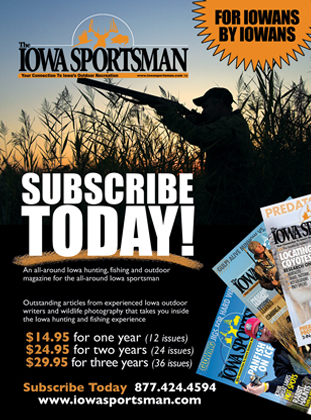A Guide to Trophy Harvest Photography
Oh Snap! A Guide to Trophy Harvest Photography
On the coffee table of the deer camp back home in Mississippi lies one of the books that I cherish the most. The contents of that book are completely original and are likely only valued by those who are company of that camp. Documentation of years dating back to my grandfather captures my attention every time I visit. I often turn through the pages as if it were the first time, completely enamored by the stories that unfold before my eyes. Although the book has no title and is not on any best-seller lists, it is priceless to me. This book is my family’s album of hunting photos.
Every year a little bit of history is added to the album with pictures of that year’s harvest. My ten year old son is looking forward to seeing his own photo show up in the plastic covered pages. Hopefully, his children will be able to see their dad as a boy holding the antlers to his first buck as the hunting tradition is passed on.
Hunting is as old as time and documentation of those harvests are nearly as old. Wildlife, hunting, and harvest art can be traced back to the time of early humans. Stick figures wielding bows and arrows while chasing deer and other creatures were created to document the harvest. Now we have all the technology in the world to take quality photos of the animals that we are fortunate enough to harvest. We owe it to the animal, ourselves, and those who come after us, to present a quality product.
Iowa is home to some of the finest hunting in the country. The deer, turkey, pheasant, and duck hunting are of the highest quality. Many opportunities abound to take game and to document the time afield. Here are some quick tips for capturing quality photos of your next trophy.
1. Take Your Time and Use What You Have
There are instances where time is of the essence when getting a freshly harvested deer dressed and to the locker. However, take some time to document the event. There has been more than one occasion when the thought occurred, “I didn’t even take a picture.” Be sure that you slow down long enough to relish the fact that you have accomplished something special. The memory could very well fade, but quality photos can last many lifetimes. Be sure to use what equipment you have to take the very best photo that you can. Even a cell phone can put out a quality photo.
2. Clean Up the Animal
As quality “hero” photos go, a clean animal makes for a better picture. What we do as hunters is messy. I am not one who is afraid to admit that I’m a hunter or display the trophy that I harvest. But I want to give dignity to the animal and respect those who might view the photo who hold differing values. You can definitely lose non-hunters if displaying a gory mess of an animal. Here are a few tips:
• Put the deer’s tongue back in its mouth. This is a quick and simple fix that will pay big dividends to a quality photo.
• Clean off excess blood and mud.
• Pro Tip: if you have already field dressed the deer, lay him on his stomach so the gaping cut through his abdomen is not showing.
3. Replicate the Scene
The traditional “back of the truck” photo is as old as hunting is with vehicles. The coffee table book mentioned is littered with tailgate pics. However, is this the best way to represent the hunt? Take time for photos at the scene of the kill. Another option is to find a nice location nearby that is reflective of that area. Not only will this give you a prettier photo, but it will tell that much more of a story for those who come after you.
Pro Tip: In Iowa we are blessed with a wide array of terrain. I suggest finding a slight rise in the terrain such as a small to position the deer. Stage the hunter behind the deer on just a slightly lower elevation to give the perception that the deer is the feature of the photo. In turn, it makes him look slightly larger without the “long arm” effect. Also, many beautiful photos have been taken in front of old farm gates, wooden fences, historic barns, etc. Don’t be afraid to explore the options of the area to get an aesthetically pleasing photo.
4. Get Low
Eye level is always the best when it comes to taking trophy photos. It takes a little work for a photographer to crouch down and grab a photo, but it does look nice. Assuming that the hunter and animal are on the ground you will want the photographer to be eye level or lower to the subjects. This gives a more pleasing view to the eye and truly captures the essence of the subject.
Other angles are appealing in hunting photography as well. Some examples are; head on, over the top with the hunter looking down at the animal, and super tight. Beautiful photos can be made if the photographer will take a moment to think through some creative shots.
Pro Tip: For a hero photo, be sure that two-thirds to three-quarters of the photo is filled with the hunter and the animal
5. Take Advantage of the Golden Hours
Just as the first hour after sunrise and the hour before sunset can be the golden hour for deer movement, it is the golden hour for photography as well. Usually, during this time of the day, the sun casts a softer glow, and the sky is most beautiful.
I realize this can be tricky depending on the timing of the harvest. If a deer is taken late in the evening it could be fruitful to wait until the next morning to grab the photos. If a deer is taken in the morning, then it would be preferable to wait until the afternoon to take the photos if time allows. Overcast days provide options to take photos all day long.
If the day is super bright and sunny, and you cannot wait to snag your photos, then I recommend finding a shady spot where all the light is consistent. It will be bright enough naturally to take a good photo, but the shadows will not be so harsh that you miss some great detail of your trophy.
If nighttime is your only option for photos, then I recommend finding a camera light. A camera flash will work but often the subject will be washed out looking. Keep the light eye level and you can still have quality pictures.
Pro Tip:
If the weather is cold enough to leave a deer hanging overnight and take photos the next morning, I recommend “staging” your deer. This means positioning the deer in such a way that the photo taking process won’t be hindered by rigor mortis in the muscles.
6. Use a Timer OR Screen Grab
Sometimes it is not practical to have someone take photos for you. Often hunters find themselves alone in the field. Fear not for there are options to still getting great trophy photos with YOU in them!
We have established that most cell phones have wonderful cameras. Most have a feature called a self-timer. Prop your camera on whatever you have handy: a stump, backpack, fence post, etc. Place the camera on selfie mode if possible and position yourself with the deer. If the camera allows, have it take multiple photos in one click of the shutter. For what it is worth: I keep a small, flexible tripod in my backpack. It is attached to a cell phone holder that is made by Realtree. This has worked all kinds of wonders.
My preferred option is to use the video mode on a cell phone for taking photos. I will shoot the entire thing in video mode (even the awkward moments where I’m wallowing around on the ground). Move the head of the animal around very slowly while looking at smiling at the camera. Zoom in and video and zoom out and video. The higher the resolution on your phone the better. After you have completed your shoot, go to the video, and watch. As you get to screens that you think would make a nice photo take a screen grab. My biggest archery buck was photographed using this method.
Pro Tip:
Turn the camera vertically and horizontally. Too often we get stuck, especially with cell phones, in the vertical position. If filming a video, then ALWAYS shoot the video horizontally. This takes the dreaded “black bars” off the video during playback.
Conclusion
You worked hard and were successful! Why not take time to document the event and cherish the memories forever? Again, a memory might fade but a photo can last many lifetimes.
by Noel Gandy
March 2021

